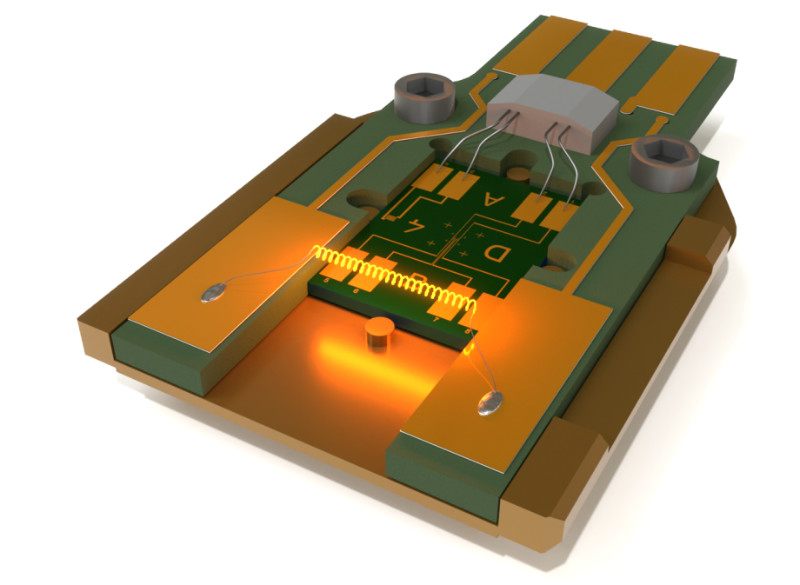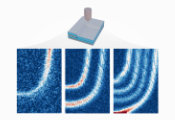‘Writing’ With Atoms Could Transform Materials Fabrication for Quantum Devices
September 24, 2024 -- A new technology to continuously place individual atoms exactly where they are needed could lead to new materials for devices that address critical needs for the field of quantum computing and communication that cannot be produced by conventional means, say scientists who developed it.
A research team at the Department of Energy’s Oak Ridge National Laboratory created a novel advanced microscopy tool to “write” with atoms, placing those atoms exactly where they are needed to give a material new properties.
“By working at the atomic scale, we also work at the scale where quantum properties naturally emerge and persist,” said Stephen Jesse, a materials scientist who leads this research and heads the Nanomaterials Characterizations section at ORNL’s Center for Nanophase Materials Sciences, or CNMS. “We aim to use this improved access to quantum behavior as a foundation for future devices that rely on uniquely quantum phenomena, like entanglement, for improving computers, creating more secure communications and enhancing the sensitivity of detectors.”

To accomplish improved control over atoms, the research team created a tool they call a synthescope for combining synthesis with advanced microscopy. The researchers used a scanning transmission electron microscope, or STEM, transformed into an atomic-scale material manipulation platform. The synthescope will advance the state of the art in fabrication down to the level of the individual building blocks of materials. This new approach allows researchers to place different atoms into a material at specific locations; the new atoms and their locations can be selected to give the material new properties.
That is important because the ability to tailor materials atom-by-atom can be applied to many future technological applications in quantum information science, and more broadly in microelectronics and catalysis, and for gaining a deeper understanding of materials synthesis processes. This work could facilitate atomic-scale manufacturing, which is notoriously challenging.
Such devices might include quantum computers — a proposed next generation of computers that may vastly outpace today’s fastest supercomputers; quantum sensors; and quantum communication devices that require a source of a single photon to create a secure quantum communications system.

“We are not just moving atoms around,” Jesse said. “We show that we can add a variety of atoms to a material that were not previously there and put them where we want them. Currently there is no technology that allows you to place different elements exactly where you want to place them and have the right bonding and structure. With this technology, we could build structures from the atom up, designed for their electronic, optical, chemical or structural properties.”
By using an electron beam, or e-beam, to remove and deposit the atoms, the ORNL scientists could accomplish a direct writing procedure at the atomic level.
“The process is remarkably intuitive,” said ORNL’s Andrew Lupini, STEM group leader and a member of the research team. “STEMs work by transmitting a high-energy e-beam through a material. The e-beam is focused to a point smaller than the distance between atoms and scans across the material to create an image with atomic resolution. However, STEMs are notorious for damaging the very materials they are imaging.”
The scientists realized they could exploit this destructive “bug” and instead use it as a constructive feature and create holes on purpose. Then, they can put whatever atom they want in that hole, exactly where they made the defect. By purposely damaging the material, they create a new material with different and useful properties.

“We’re exploring methods to create these defects on demand so we can place them where we want to,” Jesse said. “Since STEMs have atomic-scale imaging capabilities, and we work with very thin materials that are only a few atoms in thickness, we can see every atom. So, we are manipulating matter at the atomic scale in real time. That’s the goal, and we are actually achieving it.”
To demonstrate the method, the researchers moved an e-beam back and forth over a graphene lattice, creating minuscule holes. They inserted tin atoms into those holes and achieved a continuous, atom-by-atom, direct writing process thereby populating the exact same places where the carbon atom had been with tin atoms.
“We believe that atomic-scale synthesis processes could become a matter of routine using relatively simple strategies. When coupled with automated beam control and AI-driven analysis and discovery, the synthescope concept offers a window into atomic synthesis processes and a unique approach to atomic-scale manufacturing,” Jesse said.




































